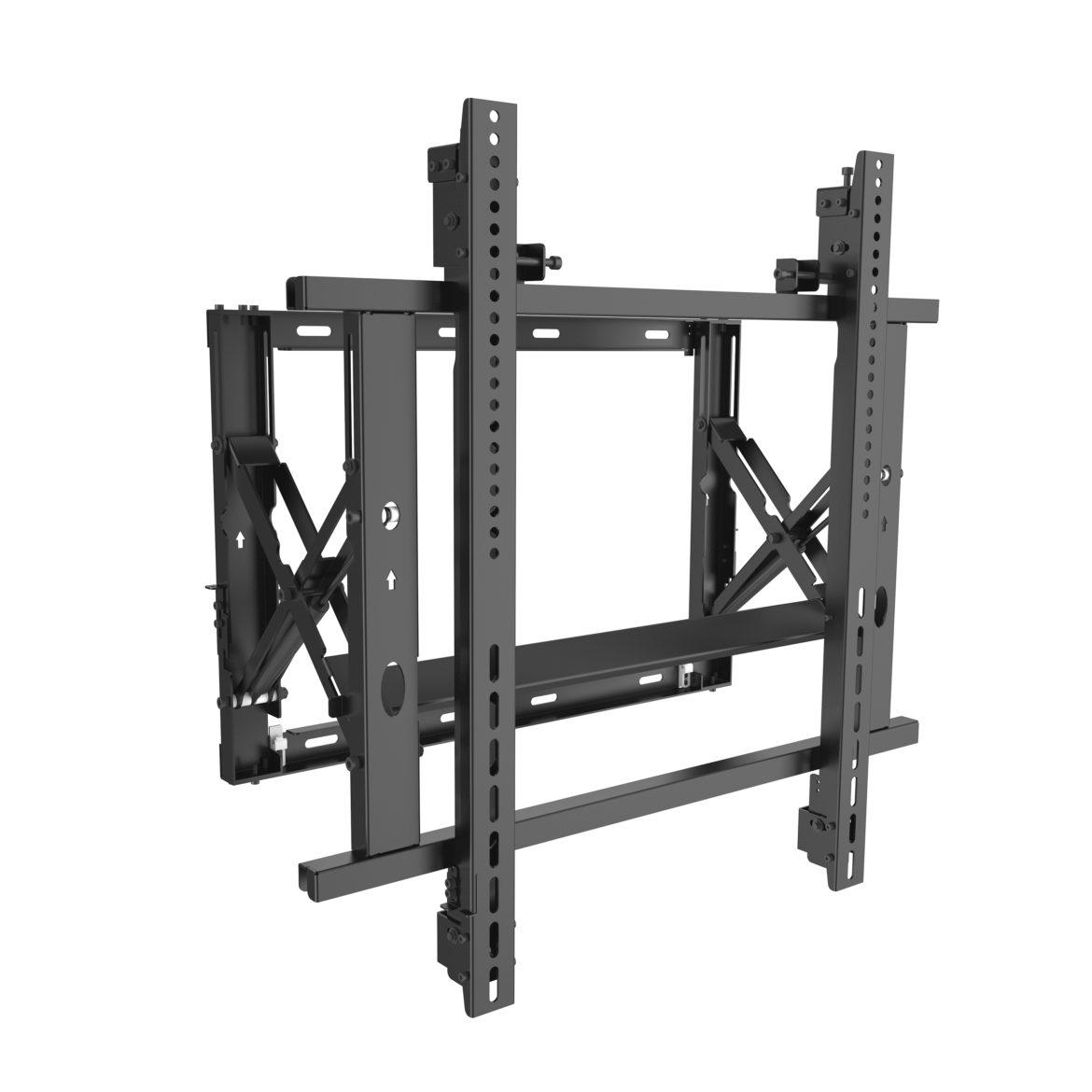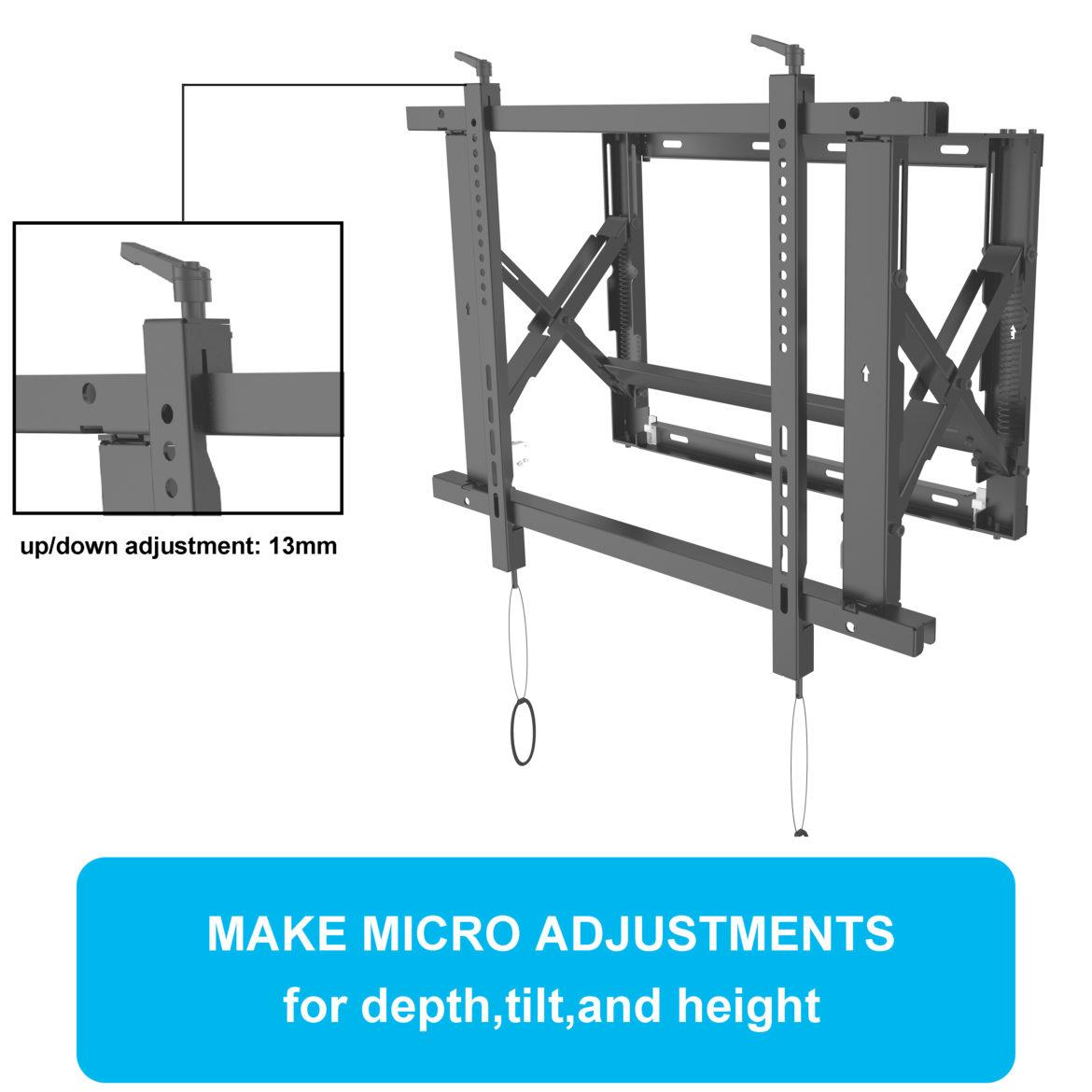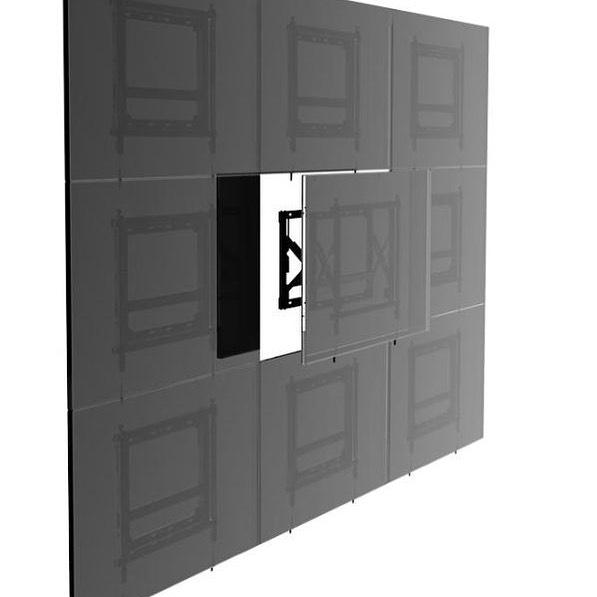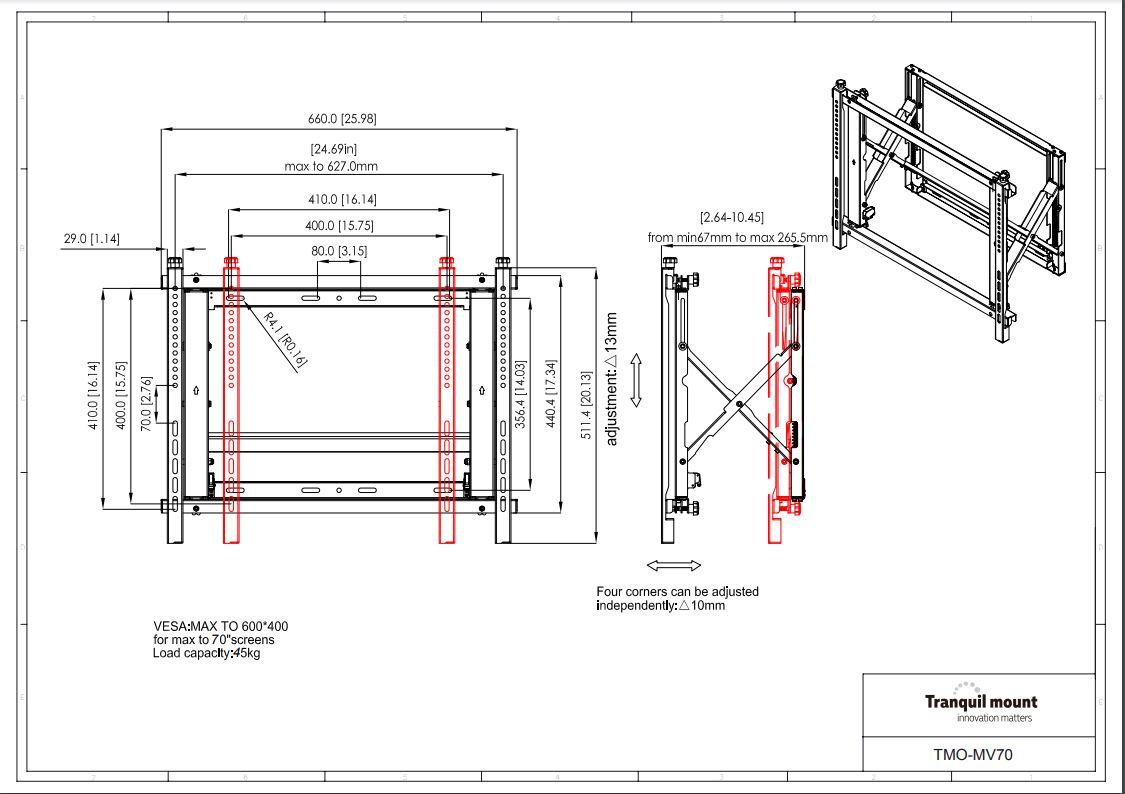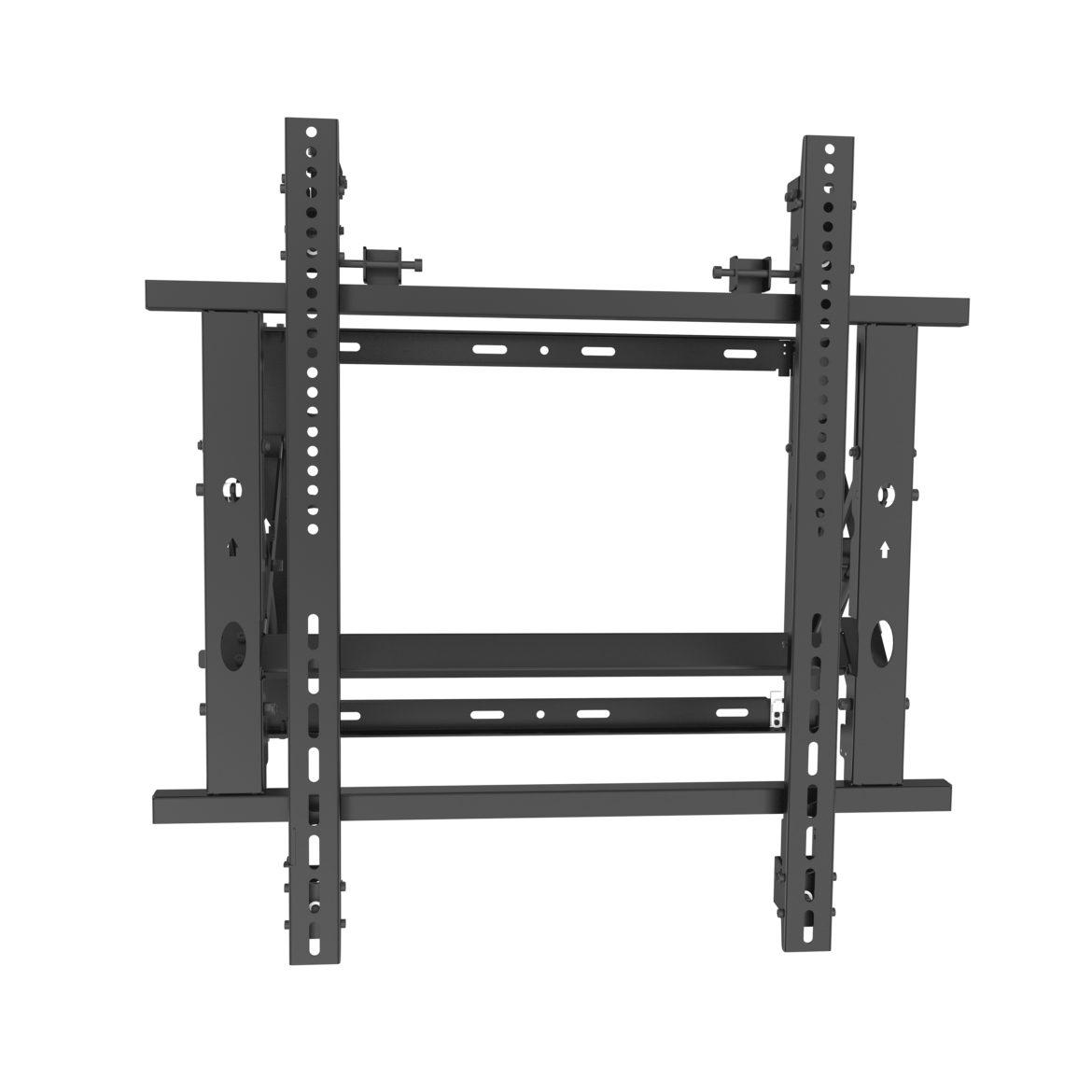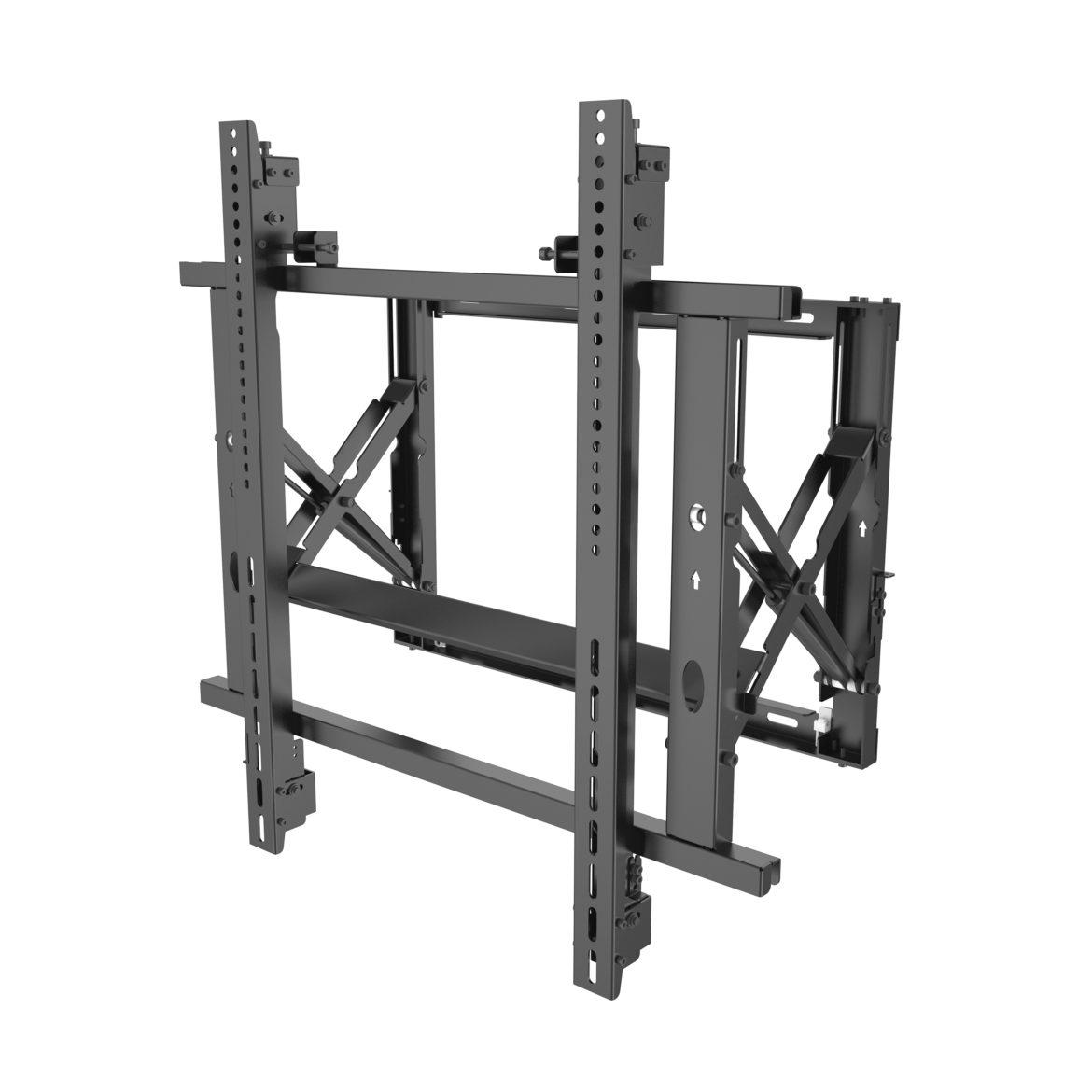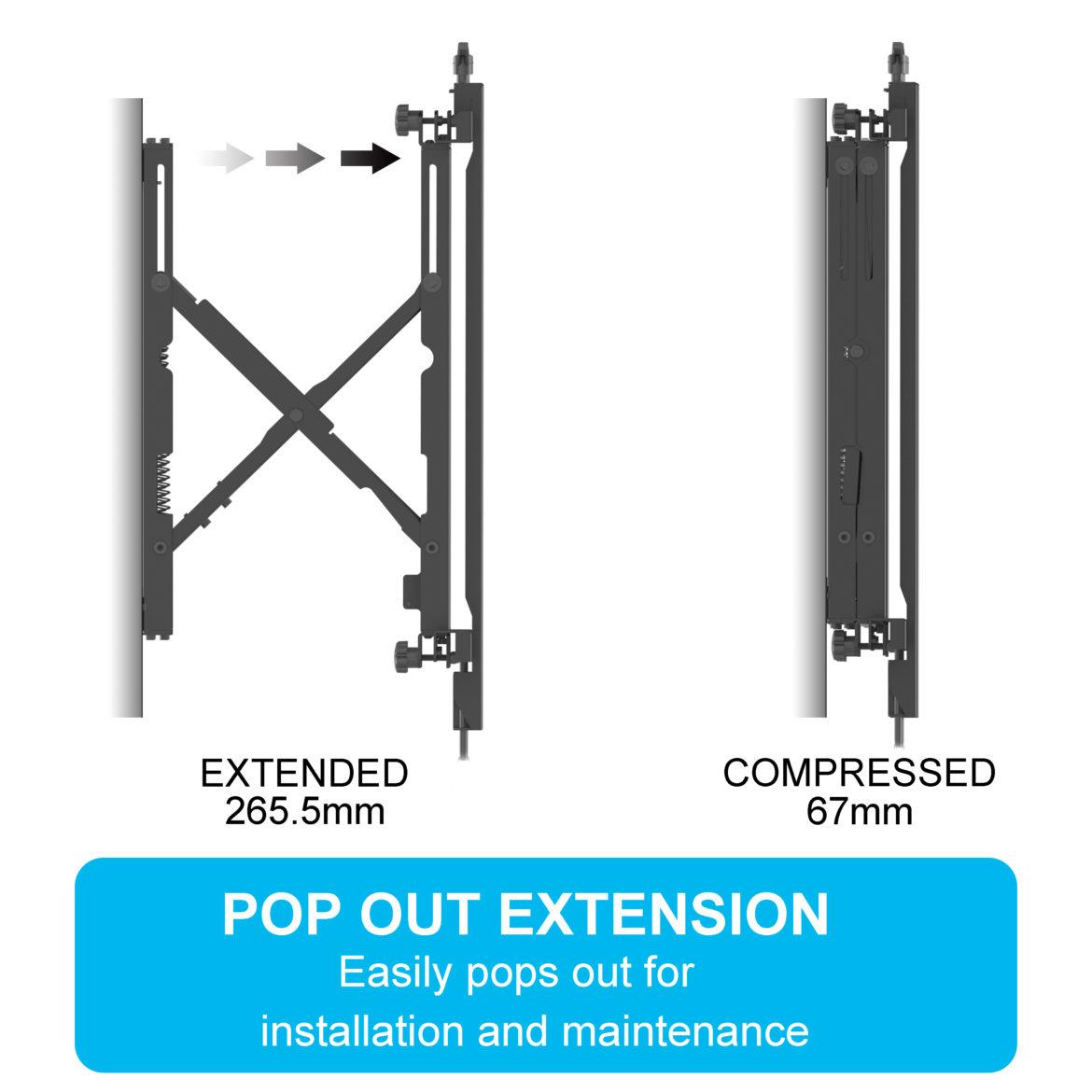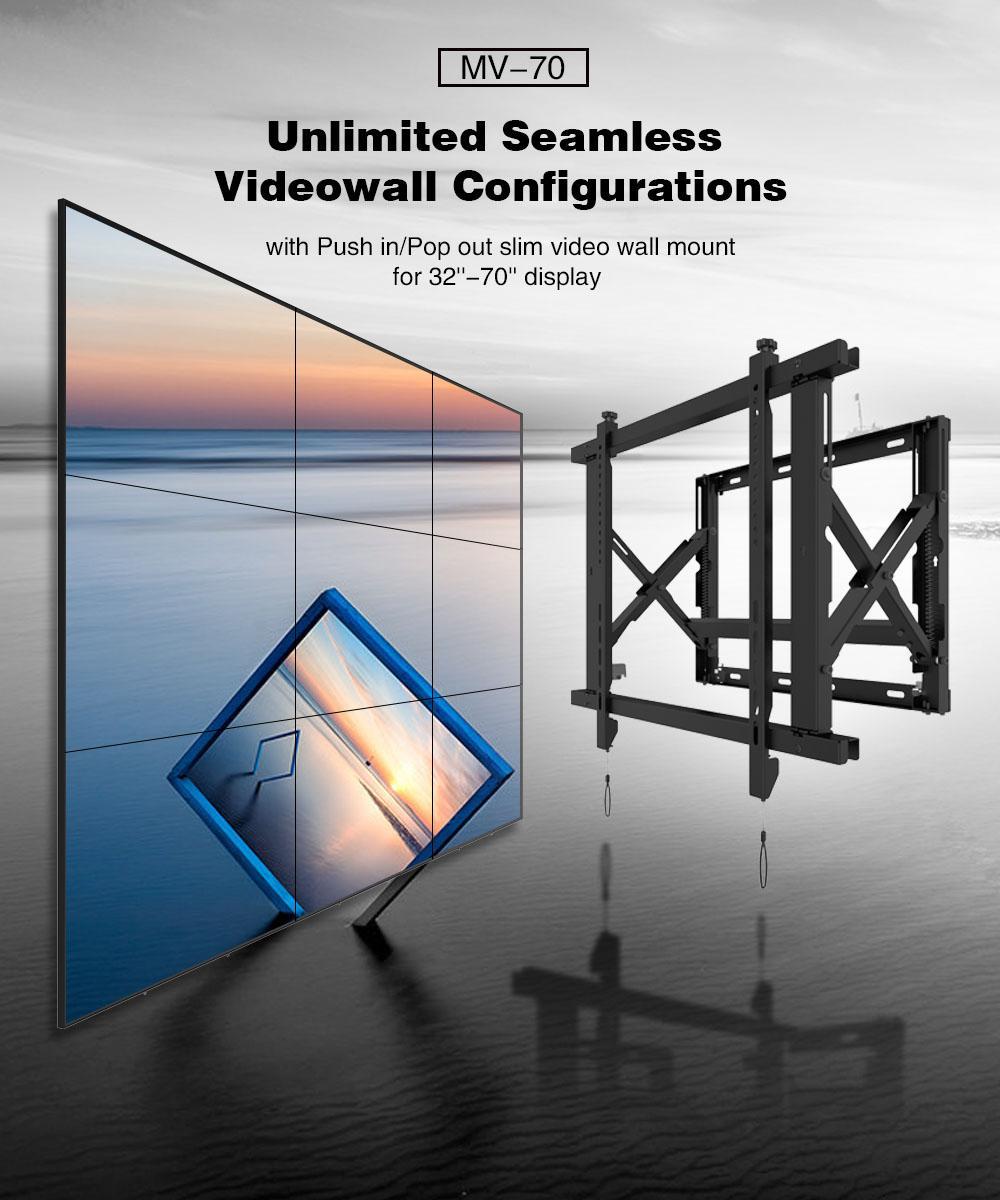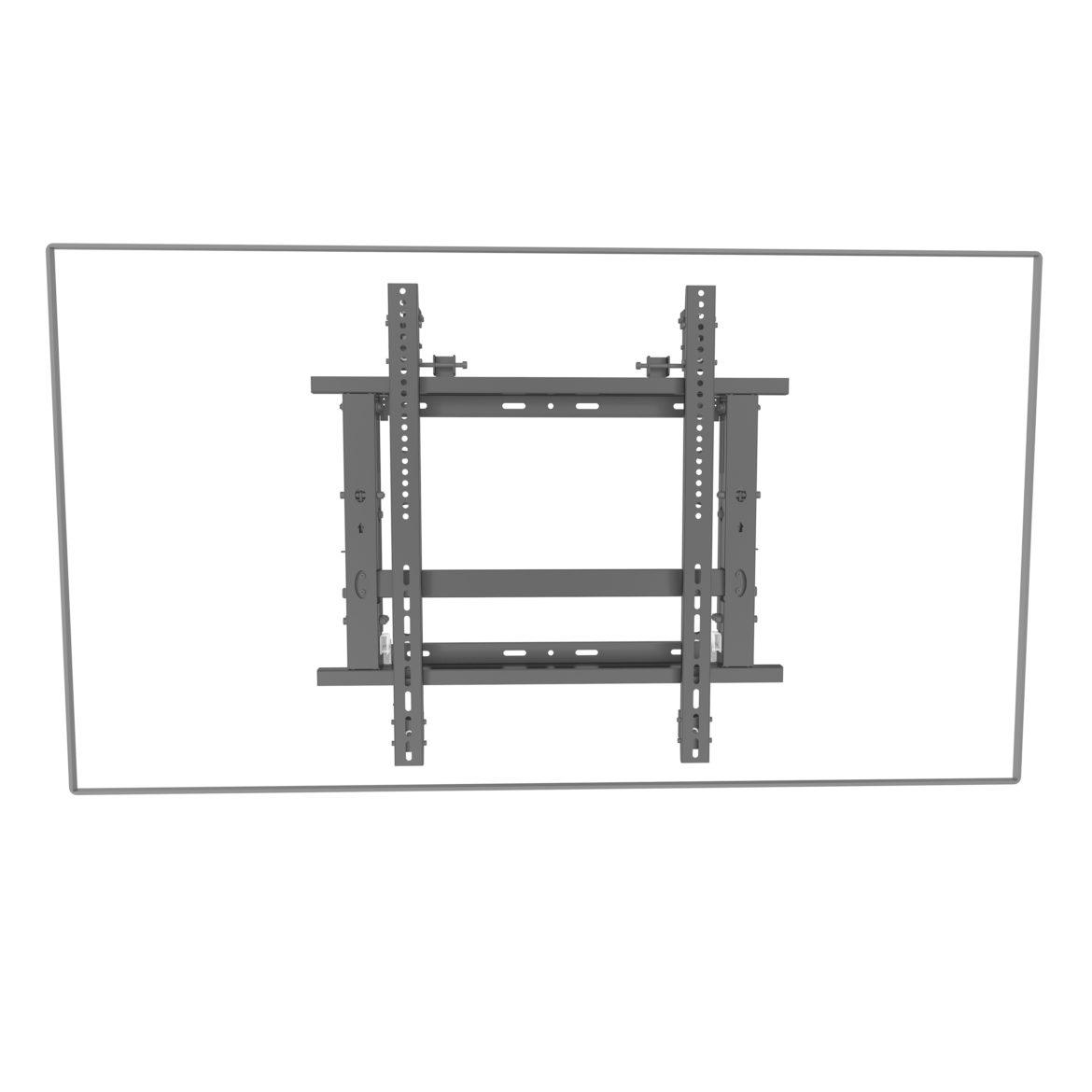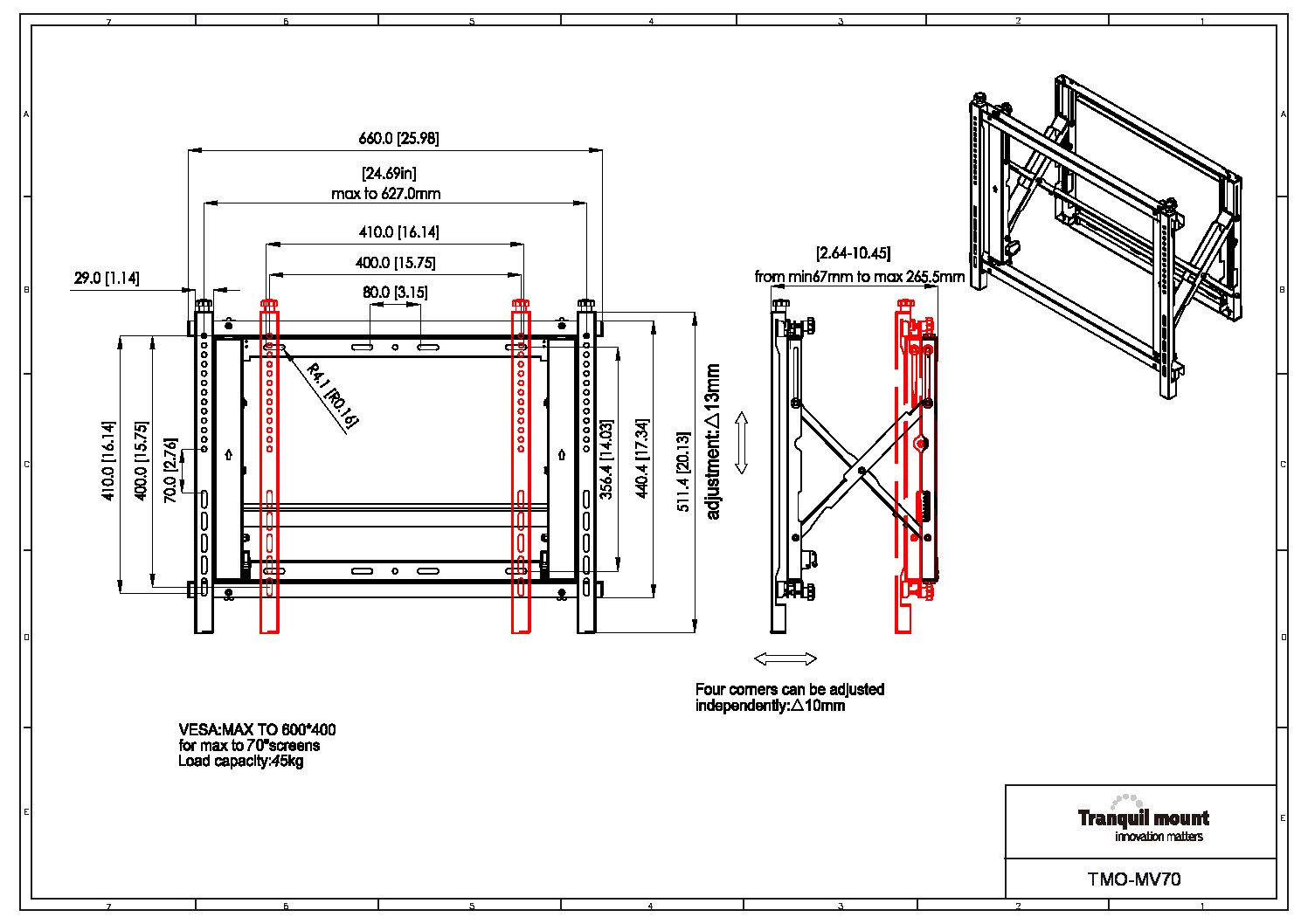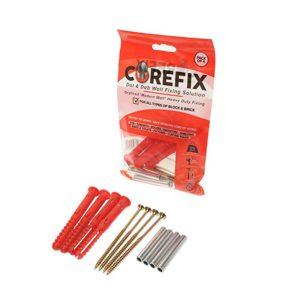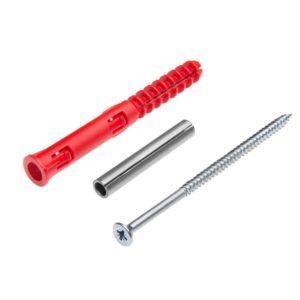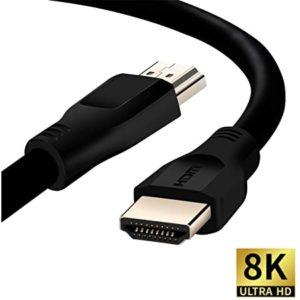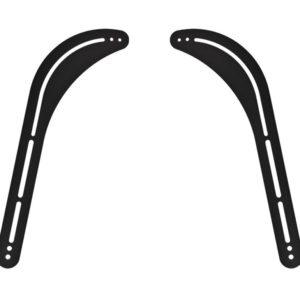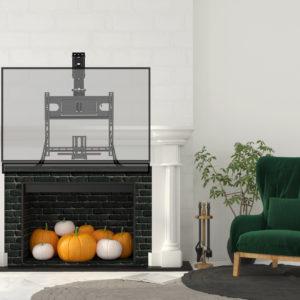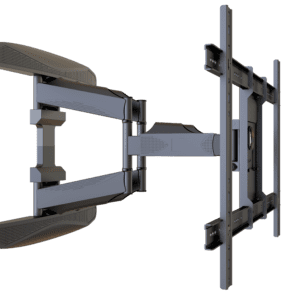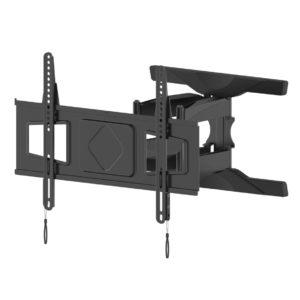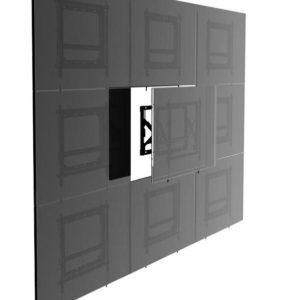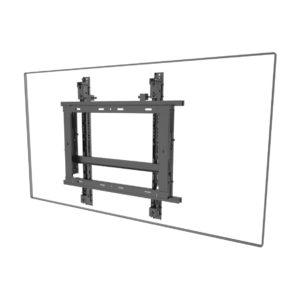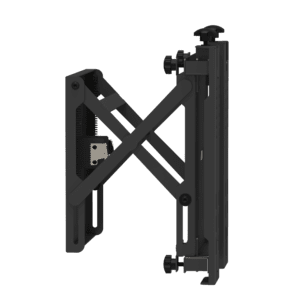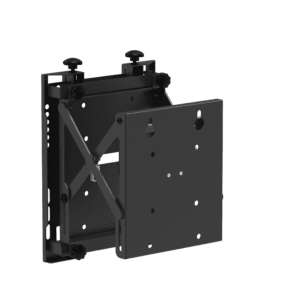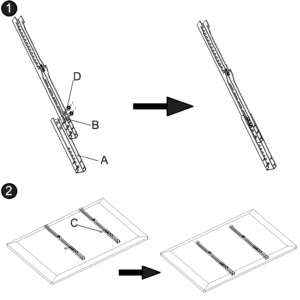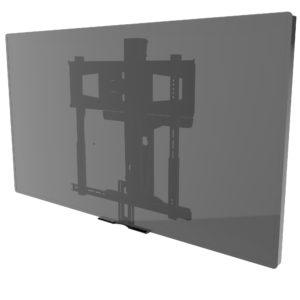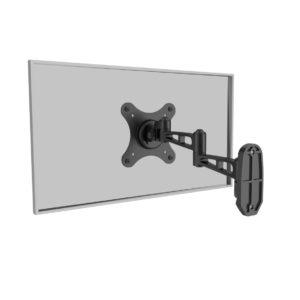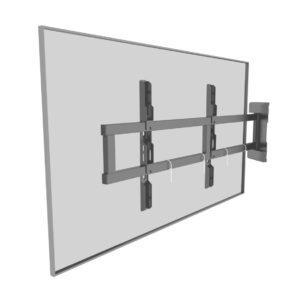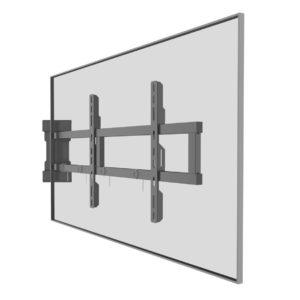What is a video wall?
A video wall (also known as a display wall) is a large visualization surface consisting of multiple displays. They consisted of multiple televisions or monitors installed closely together. The objective was to make it seem like one large display surface. The problem, however, was the large frame (or bezel) surrounding each screen’s functional display surface. This ultimately affected the single canvas and ruined the visual performance. Therefore, new technologies minimized the ‘dead pixel space’ between the various displays. Today’s display wall solutions generally use tiled LCD panels, rear-projection cubes, or direct LED tiles.
These display walls are obtainable in a wide range of sizes, commonly with a screen diameter between 46″ and 80″. The choice of screen size depends on the specific content and the viewing distance. If watched from up close, the pixel density should be high enough not to see the individual pixels. The resolution is subject to the wall size. For example, a 4K video wall requires 4 Full HD screens in a 2 x 2 setup.
Typical application areas include control rooms, meeting rooms, digital signage, Menu Boards and other demanding environments.
These different technologies have very distinguishable merits, answering the specific needs of users. They have several things in common. They all:
- Require a video wall controller to get content on the screens
- Are very adaptable regarding size (number of individual displays)
- Need a calibration mechanism to ensure that all individual tiles have the same brightness and colour settings. TMount automatic calibration technology does this in real-time, calibrating single displays and entire walls.
- Require a minimal inter-tile gap (or ultra-narrow bezel) to counter the ‘raster effect.’
LCD video walls
An LCD video wall consists of multiple specifically designed LCD displays. Contrary to the panels used in television sets, these LCD displays have a very narrow bezel, minimizing the gap between the boards and making it look like one big canvas. Over the years, this gap has gradually decreased.
LCD video walls are long-term and intensively used, often playing in a 24/7 mode.
The orthodox benefits of LCD video wall solutions include high brightness, good image quality, and relatively low cost. Also, the limited real estate space needed is a plus. The disadvantages are the risk of burn-in and the lower lifetime. Recent models, however, have successfully reduced these drawbacks.
Typical markets for LCD display walls include meeting and crisis rooms, lobbies, and experience centres. You can also find them in the control rooms of traffic and security centres.
LED video walls
LED technology (Direct-view) to create the most fantastic video walls. They are incredibly bright and are often used to broadcast or collaborate and to wow audiences. For example, in retail & advertisement settings, during spectacles or live performances, LED video walls are used. Due to recent price reductions, LED video walls have become within reach of most corporations to serve in control rooms or corporate lobbies. The LED display tiles consist of multiple individual colour LEDs. The pixel pitch can be pretty large when watched from afar (for live performances, for example) or very small (for control rooms or lobbies.
The high brightness, absence of inter-tile gaps and impressive colours are the main benefits of direct-view LED technology. Also, the limited depth and weight can be significant in specific settings.
Rear-projection video walls
Utilizing projection instead of LCD or direct-view LED technology, rear-projection video walls target different intents. They are common in control rooms that operate in a 24/7 mode. Utility providers, for example, generally rely on rear-projection technology to monitor their infrastructure.
A rear-projection video wall consists of multiple cubes, which feature a projector and a screen. The projectors are configured upwards. A mirror under a 45° angle reflects the image and casts it onto the projection screen. In this way, the required depth is cut dramatically. These advanced video wall can also be serviced from the front, so there is no need for a rear maintenance area.
The benefits of this technology include the following:
- The very high lifetime.
- The absence of burn-in effects.
- The thin gap between cubes.
Factors determining the video wall price
The cost is the main contributor to your video wall solution selection. Many factors need to be considered when calculating the cost of your video wall. Here are the main ones:
- Technology: There are three leading video wall technologies (defined above) with specific benefits AND price tags. Historically, ultra-narrow bezel LCD is the most economical option, followed by rear-projection cubes and LED displays (direct-view). Price decline on narrow pixel pitch LED video walls in recent years has brought this technology within reach of all corporations. LED has also benefited new markets (including control rooms, corporate lobbies, television studios, Coffee Houses Menu Board, etc.).
- Size: The nippy thing about video walls is that they are modular unlike the traditional TV bracket and take the size and aspect ratio you want. But it should be no surprise that large video walls cost more than small ones. Not only the price of the panels raises the costs: but large video walls also need more driving controllers and processing power to handle the high resolution. This is a high extra cost that should be noticed!
- Support: The more panels, the heavier the video wall system becomes. Infrastructure can become a challenge. The heaviest load for rear-projection walls is on the floor, which is rarely an issue. LED and LCD video walls are fixed to a wall, and the supporting wall catches the full load. Wall may require some additional aid to handle the pressure.
- The total cost of ownership (TCO): The initial investment is, of course, the most visible cost, but remember to calculate the operating costs as well. i.e. expenditure on electricity and consumables (like cooling fans and colour wheels). Recently Manufactured video wall displays are designed to be as cost-effective as possible, i.e. law energy rating, with as few moving parts (that are susceptible to wear) as possible.
- Service and repair costs: Even high-quality video walls can have unlikely problems. This can be minor or severe, but there is always a cost. For the company, cost predictability is essential.
TMOUNT MV70 – Video Wall Mount | Fixed TV Bracket | TV Wall mount | TV Wall Brackets
£179.99
Introducing the MV70 Video Wall Mount – a user-friendly pop-out bracket with micro-adjustment arms and push-to-close/open action. It supports VESA fixing points between 200×200 to 600x400mm, making screen installation and maintenance a breeze.
268 in stock
Description
Elevate Your Visual Displays with the TranquilMount MV70 Video Wall Mount
Unbeatable Quality and Price with TranquilMount MV70
Looking for the ultimate video wall mount that offers unbeatable quality at a competitive price? Look no further than the TranquilMount MV70 video wall mount! Designed to create near-seamless video wall solutions, our mount ensures your displays stand out, providing an impressive visual experience.
Features of the TranquilMount MV70 Video Wall Mount
Comprehensive Range of Screen Fixings
Our TranquilMount MV70 video wall mount supports screens up to 45kg and fits TVs ranging from 49 inches to 70 inches. With VESA fixings from 200×200 to 600x400mm, our mount accommodates a wide variety of screen sizes and types, making it a versatile choice for any setup.
Precision Positioning with 6-Point Micro-Adjustment
Achieve the perfect alignment with our 6-point micro-adjustment function, allowing for precise adjustments up to 15mm up and down and 10mm front and back. This feature ensures your video wall displays are perfectly positioned for optimal viewing.
Easy Installation for Seamless Integration
The TranquilMount MV70 comes pre-assembled with all necessary wall mounting materials, ensuring a fast and easy installation process. Accurate horizontal and vertical centerline marks on all backplates provide precise positioning, making setup a breeze.
Versatile Configurations for Any Setup
Our video wall mount is suitable for various configurations, including 2×2, 3×3, 4×2, 2×6, and 4×2 video walls and menu boards. This flexibility allows you to create the perfect display arrangement for your specific needs.
Why Choose TranquilMount MV70?
Don’t settle for a subpar video wall mount when you can choose the best. The TranquilMount MV70 video wall mount offers superior quality, precision, and ease of installation at a price that outperforms our competitors.
Experience the TranquilMount MV70 Difference
Try out the TranquilMount MV70 video wall mount today and experience the difference for yourself. Contact us for a sample and see why we’re the top choice for video wall mounts on the market!
For more information and to get your TranquilMount MV70 video wall mount, contact our team of experts today.
Our video wall mounts offer superior adjustability, allowing LED screens to be fixed into stunning video walls that captivate audiences. They are ideal for retail and advertising settings, as well as live performances and spectacles. Our video display mounts are highly competitive in comparison to peerless video wall brackets. With recent price reductions, video wall brackets are now accessible to most corporations for use in control rooms or corporate lobbies. The TMount MV70 display mount features tiles constructed of multiple individual color LEDs, perfect for creating a dynamic and eye-catching advertising display wall.
Additional information
| Weight | 21.3 kg |
|---|---|
| Dimensions | 128 × 50 × 10 cm |
| brand | TranquilMount |
| carrier | Parcelforce |
| feature_1 | Easy to use |
| feature_2 | 200 x 200mm (Min) , 600x600mm (Max) |
| feature_3 | Pull out TV mount |
| feature_4 | Distance from wall 97.7-301.2mm |
| manufacturer | TV 32" – 55" |
| manufacturerwarrantytime | 2 |
| merchant_category | TV Mount |
| product_url | https://www.tranquilmount.co.uk/product/tranquilmount-tm…niversal-bracket/ |
| product-vat-rate | 20 |
| search_term_1 | TV Mount |
| search_term_2 | tv above fireplace |
| search_term_3 | Swingout TV Mount |
| search_term_4 | Swing TV Bracket |
| search_term_5 | TV Bracket |
| shipping_time | 2#3 |
| sku_manufacturer | TMOMV70 |
Technical Information
| Model | TMO-MV-70 |
| Description | Video wall Mount (400 hook) |
| TV Size | 32" -70" |
| Weight Capacity | 100lbs(45kg) |
| Vesa Pattern | 200 x 200mm (Min) , 600x400 (Max) |
| Material | 2mm SPCC |
| Swivel Range | N/A |
| Tilt Range | N/A |
| Rotation | N/A |
| Distance to Wall | 67-265.5mm |
| Video-Wall-Mount-TMO-MV70-SPECs | Video-Wall-Mount-TMO-MV70-SPECs |
Accessories
-
TMount Basic Ultra HD HDMI Video 2.1 Cable 0.5m – Suitable for: TV, Monitor, laptop, 4k, 8k, 2.1, Apple, Arc, & DVD
£14.99Original price was: £14.99.£14.98Current price is: £14.98.
Product Manuals
Shipping
You may also like…
-
TV Wall Bracket: Articulating Wall Mount, Full-Motion Mounts for 32″-65″ TVs
£139.99Original price was: £139.99.£119.99Current price is: £119.99. -
Video Wall Mount Solutions Model MV70 | Digital Signage
£189.99Original price was: £189.99.£189.00Current price is: £189.00. -
MV42 Videowall Mount: Pop-Out Flat Screen Wall Mount for Digital Signage Installation
£219.99Original price was: £219.99.£159.99Current price is: £159.99.
Related products
-
TMO-TSW600SL – Swing out TV mount universal bracket
£99.99Original price was: £99.99.£79.99Current price is: £79.99.


